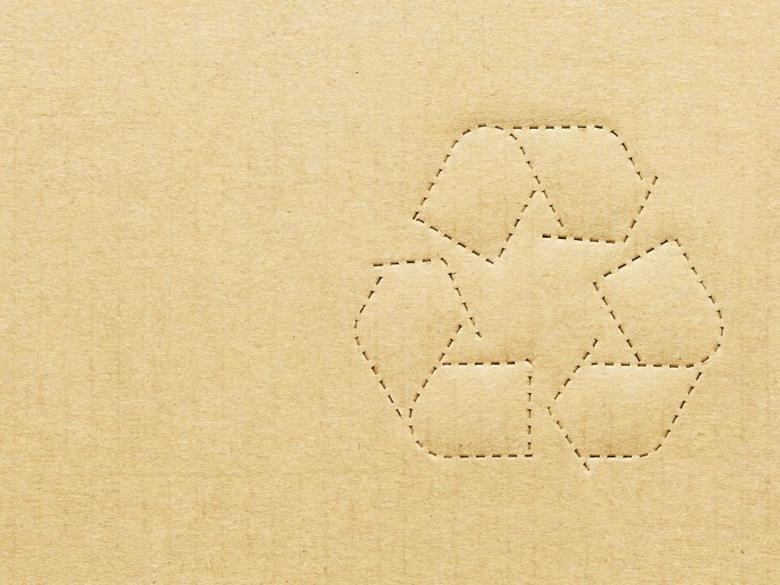Following the launch of the beta version of the 4evergreen alliance’s Fibre-Based Packaging Recyclability Evaluation protocol, we catch up with Hans Wortman, 4evergreen Chair and Internal Business Consultant at WEPA Group, and Peter Hengesbach, project co-lead and recyclability manager at Stora Enso to find out how the protocol was developed, the collaboration powering it, challenges involved and next steps.
Could you tell me a bit more about the steps that went into designing the fibre-based packaging recyclability evaluation protocol?
Hans Wortman: When our value chain came together to form the 4evergreen alliance, we knew that one of the first challenges to perfecting the circularity of fibre-based packaging was that we lacked a common assessment of recyclability, and we were taking different approaches to measuring the recyclability of fibre-based packaging materials.
That is why we set up a specific working group to develop the Fibre-based Packaging Recyclability Evaluation Protocol. Experts across the entire value chain have collaborated intensely to create a consensus-based protocol with the aim of achieving both broad acceptance and an agile response to the urgent calls within the market for a harmonised recyclability assessment across Europe.
We carried out over 50 recyclability tests of different packaging materials – from corrugated board to coated papers – using the CEPI recyclability laboratory test method, and we have verified the results.
We then evaluated the results and balanced the scoring across key parameters – sheet adhesion, coarse and fine reject, and visual impurities. From this, we were able to develop a tool that calculates the overall yield to be expected in the standard mill recycling process for a material, plus the other key parameters sheet adhesion and visual impurities, to produce an overall recyclability score for recyclability in a standard mill.
I’d like to hear a bit more about the collaborative aspect. How did having input from different experts across the value chain help?
Peter Hengesbach: Uniting experts from the entire value chain into one group brought a lot of interesting discussions and a lot of divergent viewpoints. Of course, it has been challenging to find compromises and common points between members representing different sectors and industries. However, we think it’s fundamental to include all the different views and opinions, which is the key added value of the 4evergreen alliance. We took a clear science-based approach, which helped us come to an agreement on a tool that the whole fibre-based value chain can find useful and accurate.
What challenges did you have to overcome when developing this tool?
Peter Hengesbach: First, we have worked with a relatively new laboratory test method– the CEPI recyclability laboratory test method. This means that we need to familiarise ourselves with the methods and the results obtained. Making sure that the obtained recyclability test results were both repeatable and reproducible was very work-intensive. A detailed work description was elaborated as an additional guidance document, and several testing labs all over Europe have been included in the work.
Another challenge has been to set targets and thresholds and the relative weights of the different parameters that come into play while assessing recyclability. It has been a tough exercise for the experts to come to a consensus on those values, but we are happy with the outcome and looking forward to feedback on this beta release.
How will this tool help with reaching the goal of reaching a 90% recycling rate by 2030?
Hans Wortman: Fibre-based packaging recycling rate is 82% (Eurostat, 2019), so the reason why we want to reach our goal of 90 % is more about perfecting an already circular value chain, than fixing something fundamentally wrong with our products, which are already sustainable and recycled at scale. So, with this protocol, we have taken an important step in one aspect: harmonising the way we measure and assess recyclability. It is a key component of our overall ‘design for recyclability’ approach. To reach our 90% goal, continuing to innovate will be key and that innovation can be perfected by a strong understanding of how using different materials and components will impact the recyclability of fibre-based packaging solutions.
It is also important to keep in mind that due to the wide variety of fibre-based packaging solutions, we may need to adapt recycling processes to increase the rate of material recovery. Indeed, the amount and variety of fibre-based packaging on the market are continuously growing and becoming more complex and the industry was missing a harmonised European approach to assess the recyclability of fibre-based packaging.
This protocol will enable a harmonised, objective assessment and comparison of different fibre-based packaging solutions’ suitability for efficient recycling. While the current version covers the assessment of recyclability using standard mill technologies, future versions currently being developed within the 4evergreen alliance will also include suitability assessments for other processes using different or more advanced recycling mill technologies. Indeed, any fibre-based packaging assessed as unsuitable for standard recycling can potentially be successfully recycled in flotation-deinking mills, specialised recycling mills, or even mills that have slightly adapted their process to recycle certain types of packaging.
Once completed, the Protocol will represent a comprehensive toolkit to boost recyclability evaluation and further support the industry in introducing fibre-based packaging to the market compatible with a low-carbon, climate-neutral society, together with the other guidelines already released by our alliance: the “Circularity by Design Guideline” and the “Guidance on the Improved Collection and Sorting of Fibre-Based Packaging for Recycling.”
What are the next steps following the beta launch?
Peter Hengesbach: While this document is the outcome of a collaboration and consensus-building process between more than 75 4evergreen member organisations, not all parameters potentially affecting the recyclability assessment of fibre-based packaging have been included yet. Therefore, this document will be reviewed and updated in accordance with user feedback and technical updates once the entire value chain starts applying the protocol to various fibre-based packaging items and scenarios. Any feedback is, therefore, welcome to be shared at 4evergreenalliance@gmail.com and will be considered for future versions.
This beta release of the Recyclability Evaluation Protocol focuses mainly on the evaluation using standard recycling mills technology (Part I) but also gives a short description of the other already existing recycling processes: flotation-deinking mills (Part II) and specialised recycling mills (Part III).
Future versions of this document will include an evaluation of the suitability for these recycling processes being currently developed within our alliance and aimed to be released in the latter half of 2023.
Source:
https://packagingeurope.com/comment/a-harmonised-approach-to-fibre-based-packaging-recyclability







